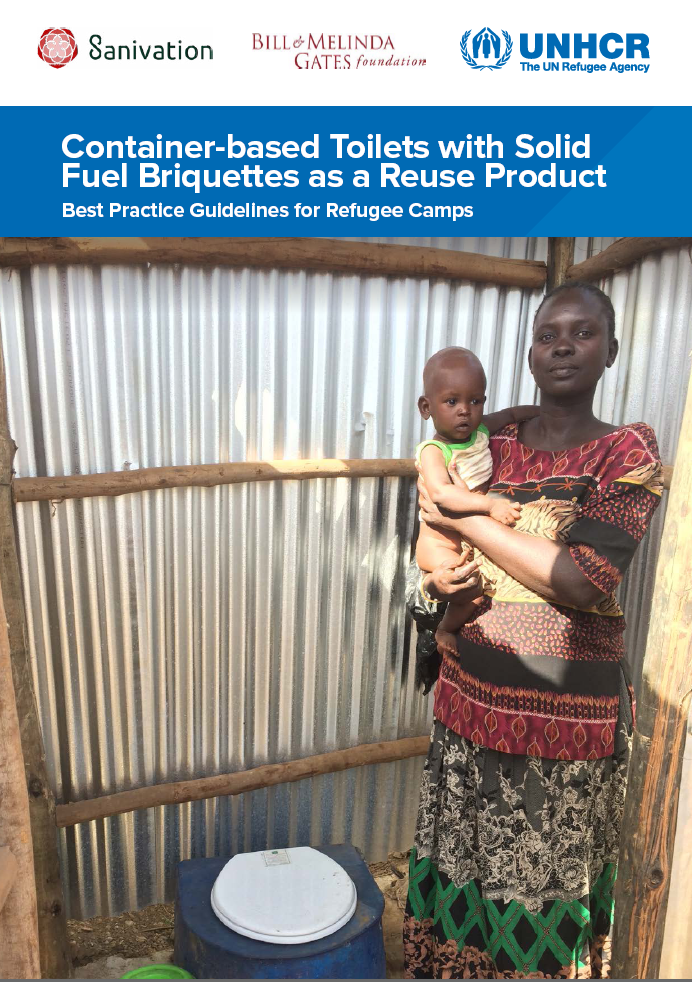
This book compiles the state of knowledge of this rapidly evolving field, and presents an integrated approach that includes technology, management and planning. It addresses the planning and organization of the entire faecal sludge management service chain, from the collection and transport of sludge and treatment options, to the final enduse or disposal of treated sludge. In addition to providing fundamentals and an overview of technologies, the book goes into details of operational, institutional and financial aspects, and provides guidance on how to plan a city-level faecal sludge management project with the involvement of all the stakeholders.
To know more: www.sandec.ch/fsm_book

This document is a comprehensive and user-friendly capacity development tool for sanitation solutions in emergency settings. It provides detailed information on key decision criteria for tried and tested emergency sanitation technologies and information on cross-cutting issues such as inclusive design, soil analysis and institutional framework, relevant to come up with informed sanitation technology decisions in emergencies.
www.emersan-compendium.org

In response to a call for sanitation solutions for difficult ground conditions in refugee settings, Sanivation introduced an innovative market-based solution with a waste-to-value component to Kakuma Refugee Camp in Kenya. This report examines the business model and financial model that Sanivation developed during the project and illustrates some of the real world challenges and opportunities for waste-to-value sanitation. It is hoped that the insights from this research will provide a useful reference for potential investors and entrepreneurs, as well as humanitarian practitioners looking to design self-sustaining waste-to-value sanitation services in refugee and low-resource settings in the future.

The following is a breakdown of key WASH guidance for COVID-19 preparedness and response to support regional and country operations in planning and resource mobilization. These are based on WHO technical guidelines and UNHCR guidance for operations and where relevant operation or site level outbreak preparedness and response plans.

A WASH and Energy Checklist for rapid assessments of Health Facilities in refugee contexts.

This document contains recommendations for setting minimum Water, Sanitation and Hygiene (WASH) standards in health-care facilities in emergencies in order to provide an adequate and safe level of health-care in addition to minimizing the risk of health-care facility related infection for patients, staff and carers.

This document provides guidance on essential environmental health standards required for health care in medium- and low-resource countries and support the development and implementation of national policies. These guidelines have been written for use by health managers and planners, architects, urban planners, water and sanitation staff, clinical and nursing staff, carers and other health-care providers, and health promoters.
Tags: Drainage, Drainage, Drainage, Hygiene Promotion, Hygiene Promotion, Hygiene Promotion, Hygiene Promotion, Medical Waste Management, Medical Waste Management, Medical Waste Management, Public Health, Public Health, Public Health, Public Health, Solid Waste Management, Solid Waste Management, Solid Waste Management, WASH in Health Care Facilities, WASH in Health Care Facilities, and WASH in Health Care Facilities. Organisations: WHO and WHO. Categories: WASH Indicators and Standards and WASH Indicators and Standards.

UNHCR and Oxfam commissioned this study to better understand how emergency WASH services are delivered, and to identify how the provision of infrastructure can lead to sustainable service delivery and a more professional management mechanism. As many humanitarian crises are protracted in nature, emergency WASH services need to be sustained once humanitarian agencies depart. This report aims to review and identify alternative service delivery options, and to provide some pragmatic guidance that can be incorporated into emergency response programmes and tested, evaluated and built on in the future.
Tags: Cross Cutting, Cross Cutting, Cross Cutting, Humanitarian to Development, Humanitarian to Development, WASH Programme Management, Water Supply, Water Supply, Water Supply, Water Supply, and Water Supply. Categories: WASH Research Documents and WASH Research Documents.

These Best Practice Guidelines were developed by Sanivation, a private sanitation company based in Kenya under UNHCR’s “Waste to Value” Project, funded by the Bill and Melinda Gates Foundation. The Guidelines are based on ongoing operational research in Kakuma Refugee Camp in partnership with UNHCR and the Norwegian Refugee Council (NRC), and will be update at the end of the Project in 2019.

These Best Practice Guidelines were developed by Oxfam under UNHCR’s “Waste to Value” Project, funded by the Bill and Melinda Gates Foundation. The Guidelines are based on operational research conducted in 2016 and 2017 in Jewi Refugee Camp in Ethiopia, where the Tiger Worm Toilets remain in operation and under regular monitoring.
Tags: Value for Money. Languages: English, English, English, English, English, English, English, English, English, and English. Organisations: Bill and Melinda Gates Foundation, Bill and Melinda Gates Foundation, Bill and Melinda Gates Foundation, OXFAM GB, OXFAM GB, UNHCR, UNHCR, UNHCR, UNHCR, UNHCR, and UNHCR. Categories: WASH Policy Guidelines, WASH Policy Guidelines, WASH Policy Guidelines, WASH Policy Guidelines, WASH Policy Guidelines, WASH Reference Documents, WASH Reference Documents, WASH Reference Documents, WASH Reference Documents, WASH Reference Documents, WASH Reference Documents, WASH Reference Documents, WASH Reference Documents, and WASH Reference Documents.










